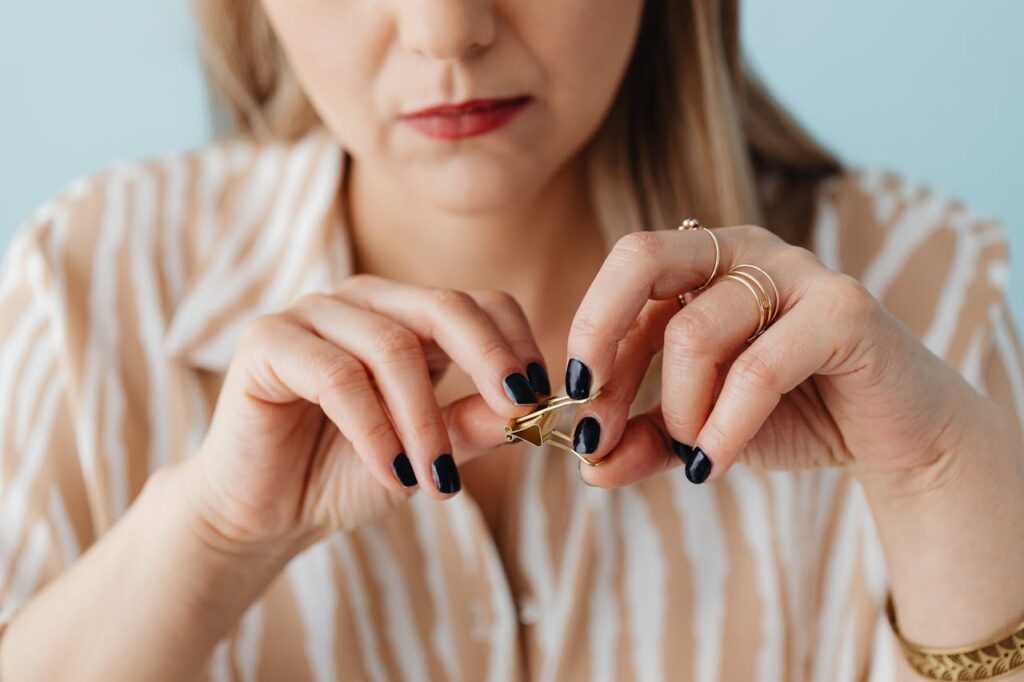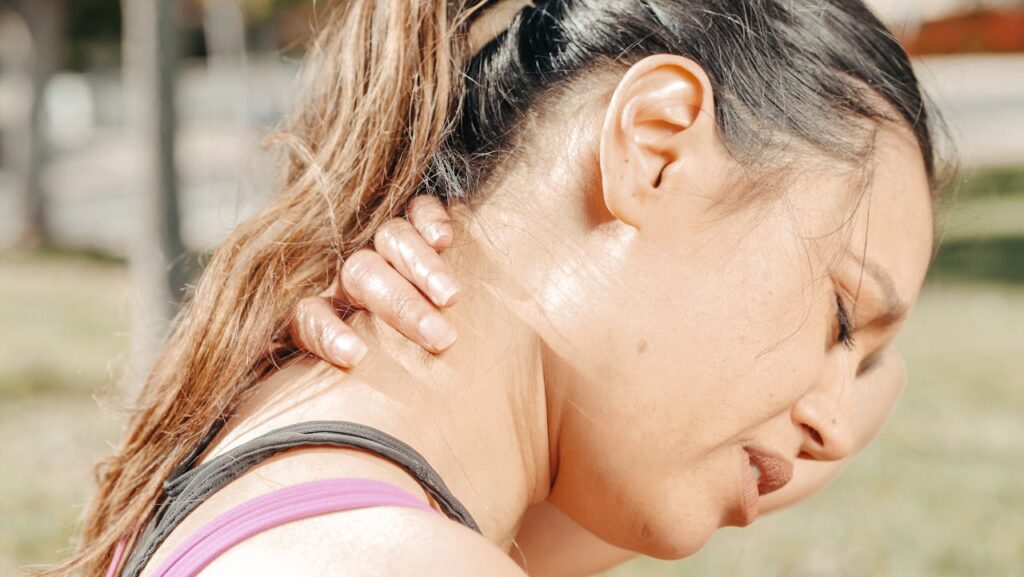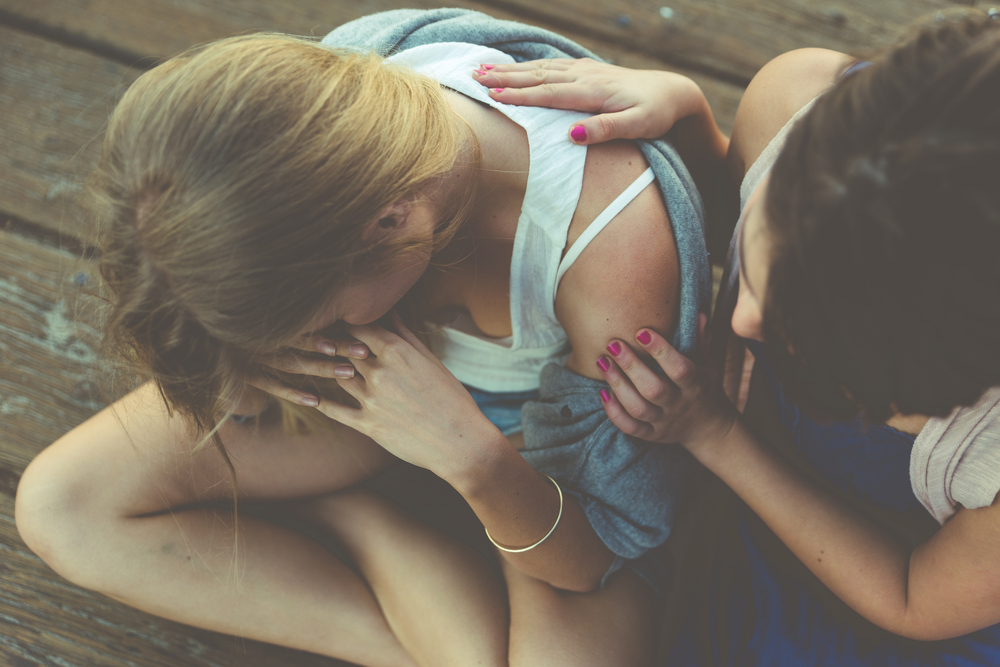Anxiety affects millions of people worldwide, yet many individuals struggle to articulate their internal experience. While some people openly discuss their mental health challenges, others unconsciously communicate their anxiety through subtle behavioral patterns and physical manifestations. Understanding these non-verbal indicators can help us recognize when someone might be experiencing deep anxiety and respond with greater empathy and support.
The human body and mind are interconnected systems that often reveal internal states through observable behaviors. Research in psychology and neuroscience shows that anxiety activates the sympathetic nervous system, leading to various physical and behavioral responses that occur automatically, often without the person’s conscious awareness.
Fidgeting and Repetitive Movements
People experiencing deep anxiety frequently engage in repetitive self-soothing behaviors that help them manage their internal tension. These movements include leg bouncing, pen clicking, hair twirling, finger tapping, or playing with jewelry. These actions serve as outlets for nervous energy and provide a sense of control during moments of heightened anxiety.

The repetitive nature of these movements activates the brain’s reward pathways and can temporarily reduce cortisol levels. However, the behaviors often become more pronounced during stressful situations, making them reliable indicators of underlying anxiety.
Excessive Self-Grooming
Anxious individuals often display heightened self-grooming behaviors that go beyond normal personal care routines. This includes frequent hair touching, adjusting clothing repeatedly, checking their appearance in reflective surfaces, or smoothing down their hair multiple times within short periods. Psychologists say these behaviors stem from both the desire to maintain control and the anxiety-driven need to present a perfect exterior to others. The physical act of grooming also provides temporary comfort and distraction from anxious thoughts.
Rigid Posture and Muscle Tension

Deep anxiety manifests physically through increased muscle tension, particularly in the shoulders, neck, jaw, and back. Anxious individuals often sit or stand with unusually straight postures, appearing rigid or uncomfortable even in relaxed settings. This physical tension results from the body’s fight-or-flight response remaining partially activated. The muscles remain in a state of readiness, even when no immediate threat exists. Over time, this chronic tension can lead to headaches, back pain, and other physical discomforts.
Avoiding Eye Contact or Excessive Scanning
Eye contact patterns reveal significant information about anxiety levels. Some anxious individuals avoid direct eye contact, finding it overwhelming or threatening. Moreover, others engage in excessive environmental scanning, constantly looking around rooms or checking exits and potential escape routes. Both behaviors reflect the brain’s heightened threat detection system. The amygdala, which processes fear and anxiety, influences these visual behaviors as part of its protective mechanisms.
Changes in Breathing Patterns
Anxiety directly affects breathing, often causing shallow, rapid, or irregular breath patterns. People with deep anxiety may unconsciously hold their breath, sigh frequently, or take sudden deep breaths as if they forgot to breathe properly. These breathing changes occur because anxiety triggers the sympathetic nervous system, altering normal respiratory rhythms. The body prioritizes quick oxygen delivery to muscles over efficient, calm breathing patterns.
Social Withdrawal and Position Preference
Anxious individuals often position themselves strategically in social situations. They prefer seats near walls or exits, avoid being in the center of groups, and may physically distance themselves from others even in familiar settings. This behavior, however, reflects the need to maintain control over their environment and have escape options readily available. The positioning choices provide psychological comfort and reduce feelings of vulnerability.
Perfectionist Behaviors and Over-Preparation

People with deep anxiety often display perfectionist tendencies that manifest in over-preparation for routine activities. They may arrive excessively early to appointments, bring unnecessary backup items, or spend disproportionate time organizing and reorganizing their belongings. These behaviors serve as coping mechanisms that provide a sense of control and reduce uncertainty. The preparation rituals help anxious individuals feel more equipped to handle potential challenges or unexpected situations.
Sleep and Energy Pattern Disruptions
Chronic anxiety significantly impacts sleep quality and energy levels, creating visible patterns in behavior and appearance. Anxious individuals may appear tired despite claiming adequate sleep, show energy crashes during specific times of day, or display restlessness that prevents true relaxation. Research shows, the constant state of mental alertness associated with anxiety interferes with the body’s natural circadian rhythms and prevents restorative sleep stages from occurring effectively.
Overcompensating Social Behaviors
Some people with deep anxiety develop compensatory social behaviors that mask their internal struggle. They may become overly agreeable, excessively helpful, or inappropriately cheerful in situations where such responses seem forced or unnatural. These behaviors represent attempts to avoid conflict, rejection, or negative attention. The overcompensation requires significant energy and often becomes more pronounced during periods of heightened anxiety.
Physical Self-Soothing Gestures

Anxious individuals unconsciously engage in self-soothing behaviors that provide comfort during stressful moments. These include rubbing their arms or hands, touching their face or neck, adjusting clothing repeatedly, or making subtle rocking motions while seated. These gestures mimic the comforting touch received during early childhood and activate the parasympathetic nervous system, providing temporary relief from anxiety symptoms.
Hypervigilance to Others’ Reactions
People with deep anxiety display heightened awareness of others’ facial expressions, tone changes, and body language. They may quickly notice when someone seems upset, distracted, or different from usual, often interpreting neutral expressions as negative. This hypervigilance stems from the brain’s overactive threat detection system. Anxious individuals constantly scan for potential social threats or signs of disapproval, even in safe environments.
Decision-Making Paralysis and Avoidance
Deep anxiety often manifests as difficulty making decisions, even about minor matters like choosing restaurants or selecting items from menus. Anxious individuals may defer decisions to others, take excessive time to choose, or avoid situations requiring immediate choices. This indecisiveness results from the brain’s tendency to catastrophize potential outcomes and the fear of making wrong choices. The cognitive load of anxiety reduces available mental resources for decision-making processes.
Understanding and Supporting Others
Recognizing these subtle signs of anxiety in others allows for more compassionate and supportive interactions. It’s important to remember that these behaviors serve important functions for anxious individuals and should not be immediately corrected or criticized. Supporting someone with anxiety involves creating safe, predictable environments, being patient with their coping mechanisms, and encouraging professional help when appropriate.
Simple acknowledgments of their experience and consistent, non-judgmental support can significantly impact their comfort and well-being. Understanding that anxiety manifests differently in each person helps us develop greater empathy for the diverse ways people navigate their internal experiences while maintaining their daily responsibilities and relationships.
Disclaimer: This article was created with AI assistance and edited by a human for accuracy and clarity.

